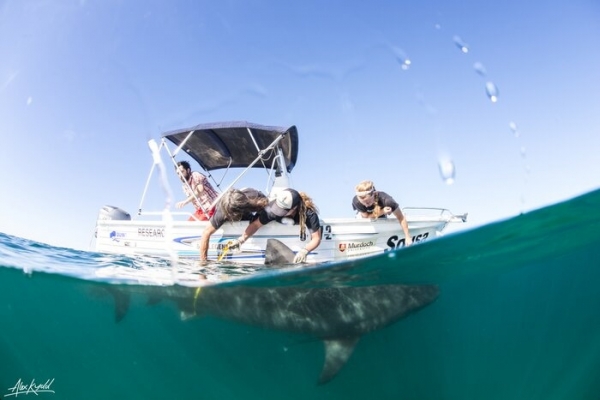Using sophisticated electronic tags, scientists have assembled a large biologging dataset to garner comparative insights on how sharks, rays, and skates – also known as “elasmobranchs” – use the ocean depths. While some species spend their entire lives in shallow waters close to our shores on the continental shelf, others plunge hundreds of meters or more off the slope waters into the twilight zone, beyond where sunlight penetrates. This new understanding of how elasmobranchs use the ocean will enable policymakers and resource managers the opportunity to examine the threats these animals face, and guide future management and conservation plans.
A study published Aug. 19 in Science Advances, led by Stanford University and ZSL (Zoological Society of London) researchers, is the largest global investigation of where and when a diverse group of elasmobranchs move vertically. A team of 171 researchers from 135 institutions across 25 countries brought together two decades of data from satellite and archival tags that remotely tracked the movements and behaviors of 38 species in oceans across the globe.
“For the first time, we have a standardized, global database that we used to fill important knowledge gaps about the diving behaviors of sharks and rays,” said Samantha Andrzejaczek, co-lead author of the study and a postdoctoral research fellow at the Hopkins Marine Station of Stanford University. “This will enable better understanding of what fisheries interact with elasmobranchs and how to improve management of many of these long-lived animals.”
Read more at Stanford University
Image: Samantha Andrzejaczek, a postdoctoral research fellow at Stanford’s Hopkins Marine Station, (second from right) tagging a tiger shark. (Credit: Alex Kydd)


